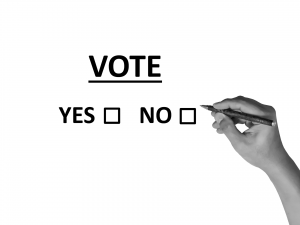Recently, when I was discussing with presidents of small to middle size businesses in greater Kyoto, I found out that Kyoto is probably a quite unique city where “two parties’ democracy” has been realized in the local community.
According to Kyoto governors’ transition described in Wikipedia, 1950-1978, the communist party was the ruling party in Kyoto. Since 1978, the Liberal Democratic Party-LDP- has been the ruing party, however, the communist party has always been the second and won the high voting ratio. For instance, the recent election in 2018, the communist party accounted for 44 percent of total voters.
Through the discussion and insights from those local business leaders, I have come up with the following reasons why such two parties’ democracy has been working in Kyoto.
1 War history
2 Local isolation
3 Criticism
4 Rebellious spirit

1 War history

Since Kyoto was settled as the center of politics in 8th century in Japan, over 1200 years of its history, the local people have experienced various wars. Some were among samurai warriors, some were associated with pollical power dominance, and others were based on religious schools and positions. Through those experiences, people have got well-understood that keeping one political party dominance may sooner or later faces a crisis, a danger of dictatorship. Therefore, if the current ruling party gets the secondary party, they would play a role of a whistle blower, and the other way around when the opposition party takes the fist seat. By doing this, a sort of balance should be maintained, and people’s wish or will must be reflected into the politics. This can be interpreted as Kyoto people’s mindset.
2 Local isolation

I don’t have any impression that either Kyoto communist party is very close to other socialism countries or Kyoto LDP has got well along with so-called Western society. This is simply because the Kyoto golden rule: to get involved in Kyoto society, one has to be welcomed by the local community as “comrade”. Regardless of political position, belief, or any credos, unless one can demonstrate his/ her fittest to Kyoto community, he/she would never get involved in any local activities. This is tricky part but also has allowed Kyoto political parties to be independent in a positive sense from external influences.
3 Criticism

This is somehow related with the point one. Kyoto people basically have strong criticism attitudes towards the system imposed by the government. This has been seen in a positive way in technologies in Kyoto. Kyocera, Omron, Murata, and also Nintendo, Kyoto based big name companies have developed themselves with criticism and challenging spirits. They have pushed themselves hard to make a breakthrough against so-called “market standard”/ “common sense”.
4 Rebellious spirit

Since the Meiji revolution in 19th century, the political center of Japan has been in Tokyo and this directly and indirectly raised a sort of “Rebellious spirit” among Kyoto people. Just before the election of Kyoto governor, an old lady in Kyoto had a media interview. She mentioned that she was going to vote the communist party as she had supported “the conservatives”. In her mind, good old days were brought about the governor of communists and therefore, the conservative party is the communist party.

To sum up, taking into account the cultural background, history, and local people’s mindset, so-called ideal two parties democrat has been realized in Kyoto. I personally feel that this may be the model in the world in the sense that actual democracy has been realized by local people.
Further queries or doubts, please email to ytomizuka@abrilsjp.com
News Letter subscription is here






